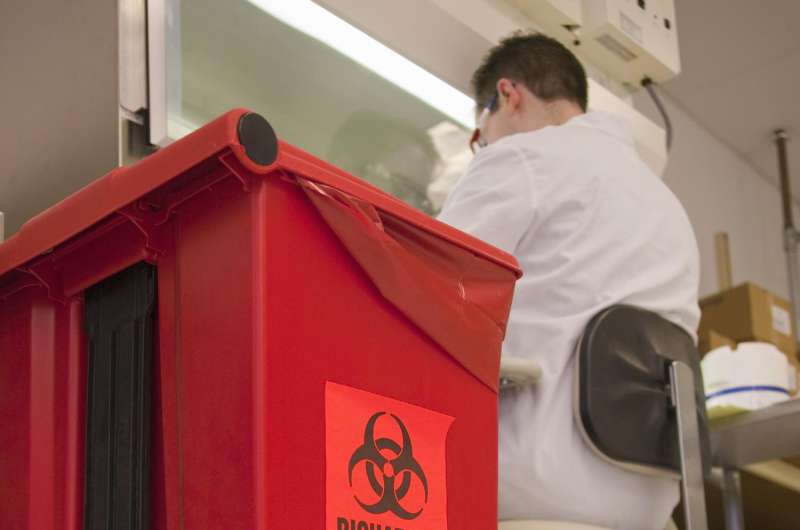Report recommends ways to improve response to toxic inhalation disasters

Better medical responses to the accidental or intentional release of inhaled toxic chemicals are being developed, but the field faces considerable challenges, according to a new report by an international panel of experts.
The report, "Chemical Inhalation Disasters: Biology of Lung Injury, Development of Novel Therapeutics, and Medical Preparedness," has been published online in the Annals of the American Thoracic Society.
The 16-member panel's findings and recommendations grew out of a workshop sponsored by the American Thoracic Society (ATS) and the National Institutes of Health's (NIH) Countermeasures Against Chemical Threats (CounterACT) Program.
"The modern global geopolitical climate and recent events have shown us that chemical threats are real," said Eleanor M. Summerhill, MD, lead author of the report and a pulmonary and critical care physician at Lahey Hospital and Medical Center, in Burlington, Mass. "Current standard medical therapies have often been extrapolated from treatments for other forms of lung injury based upon scant supportive data."
She added that the aims of the workshop were to discuss innovative investigative approaches to furthering understanding of the pathophysiologic mechanisms of inhalation lung injuries, highlight promising new therapeutic targets and novel medical countermeasures and identify future directions in the development, manufacture and distribution of specific and effective medical countermeasures.
The panelists wrote that hurdles to ongoing research in the field "include the relative rarity and unpredictability of toxic inhalationl events" and "inherent ethical constraints restricting research and testing in humans."
Given these obstacles, the panel called for:
- Developing new laboratory models more closely mimicking human exposure conditions and mechanisms and facilitating the creation of uniform experimental conditions to validate results.
- Extrapolating pathophysiologic mechanisms from lung diseases that have different causes, but produce similar patterns of lung injury, such as acute respiratory distress syndrome (ARDS) and bronchiolitis obliterans.
- Creation of a more robust global infrastructure to support acute and long-term epidemiological studies of toxic inhalational exposures, and linking these studies to laboratory discoveries.
- Working with industry to bring new medicines and devices to market.
- Reducing the time and expense of obtaining U.S. Food and Drug Administration (FDA) approval.
According to the panel, "novel therapies require up to 10 years or more to achieve FDA approval, with recent cost estimates in excess of $800 million." Given the irregular occurrence of accidental and intentional chemical inhalation disasters, the panel added that pharmaceutical companies may find it prohibitively expensive to pursue FDA approval of medicines for use in inhalation disasters, even if the medicine are already approved in the treatment of other lung problems.
The report reviews current treatments and research related to chlorine, bromine, phosgene, cyanide, sulfur mustard and respirable nerve agents, including sarin. It also highlights epidemiologic findings from the 2001 terrorist attack on the World Trade Center and the massive 2005 chlorine gas leak caused by a train accident in Graniteville, South Carolina.
"Because inhalational disasters and chemical threats remain real, a continued awareness of public need is necessary," the panelists wrote. "In the U.S., even with the combined resources of the NIH, Health and Human Services' Biomedical Advance Research and Development Authority (BARDA), and the Department of Defense, the costs of countermeasure development and FDA approval are challenging."
The panelists added that a robust global response to the danger of chemical inhalations "requires tenacity and commitment to negotiate collaborations, funding sources, intellectual property and other concerns."
More information: Eleanor M. Summerhill et al. An Official American Thoracic Society Workshop Report: Chemical Inhalational Disasters: Biology of Lung Injury, Development of Novel Therapeutics, and Medical Preparedness, Annals of the American Thoracic Society (2017). DOI: 10.1513/AnnalsATS.201704-297WS
















